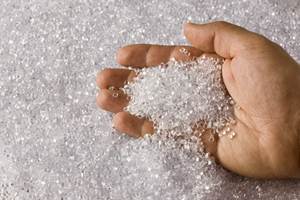Kuraray Expands Into Biobased Barrier Materials Through Plantic Acquisition
Japan's Kuraray has acquired Australia's Plantic Technologies and now enters the biobased barrier food packaging market sector.

Expect biobased barrier materials in food packaging to thrive, as is indicative from a recently announced acquisition. Best known for making the world’s first commercial introduction of the high-performance barrier resin EVOH, Japan’s Kuraray (U.S. office in Houston) has acquired Australia’s Plantic Technologies (U.S. office in North Andover, Mass.), enabling the company to make its entry into the biobased food packaging market sector.
Kuraray has been the exclusive distributor for Plantic’s EcoPlastic film product line in the Japanese and South Korean markets since September 2014. Both companies have introduced new products within the last few years. Kuraray launched Kurarister, a transparent barrier film for retort applications, which uses the company’s proprietary organic/inorganic composite coated on a base substrate: Film structure grades CF and C are based on PET film and grade N is based on biaxially oriented nylon film.
Plantic’s commercial introduction of its first ultra-high barrier renewably-sourced film packaging format, eco Plastic, was in 2011. This is a multilayer semi-rigid sheet used for refrigerated goods such as meats, fish and fresh pasta. The structure’s core, which accounts for 80% of the total structure, is predominately made from corn starch, while the skin layers are primarily HDPE or PP.
Plantic has now introduced two other packaging formats: Plantic R1 and HP1, both of which are also made with Plantic’s unique patented technology based on the use of high-amylose corn starch but have PET skin layers. These fully biodegradable sheet products are suited for thermoforming applications (e.g., packing foods and goods with water activity of 35% to 70%. R1 is also suitable for direct contact with fatty foods.
As one of the world’s leading producers of barrier materials, Kuraray is aiming to further develop its business through the addition of Plantic’s biobased barrier material, which is now used in a broad range of products in the barrier packaging sector and is supplied to major supermarkets and brand owners on three continents—Australia, North America and Europe. Kuraray Group officials say, they expect their global sales network to assist in further developing the biobased barrier business with Plantic film in response to the global demand for improved freshness, reduced food loss and waste.
In the Australian market, Plantic film is well known and is being used by a major supermarket chain. In the U.S., one of the largest meat consumer countries, Plantic has commenced supply to a number of brand owners and retailers, and Kuraray plans to further develop this business including the potential establishment of a production base or an alliance with third parties. In Japan, where the demand for extended shelf life for fresh meat and other fresh food in increasing, Kuraray says it can assist customers to reduce food loss and waste with the environmentally friendly Plantic film.
In addition, there are significant synergies between Kuraray’s existing barrier business and Plantic’s biobased barrier technology which are expected to drive new applications.
Want to find or compare materials data for different resins, grades, or suppliers? Check out Plastic Technology’s Plaspec Global materials database.
Related Content
Melt Flow Rate Testing–Part 1
Though often criticized, MFR is a very good gauge of the relative average molecular weight of the polymer. Since molecular weight (MW) is the driving force behind performance in polymers, it turns out to be a very useful number.
Read MorePrices Up for PE, PP, PS, Flat for PVC, PET
Trajectory is generally flat-to-down for all commodity resins.
Read MoreDensity & Molecular Weight in Polyethylene
This so-called 'commodity' material is actually quite complex, making selecting the right type a challenge.
Read MoreThe Fundamentals of Polyethylene – Part 2: Density and Molecular Weight
PE properties can be adjusted either by changing the molecular weight or by altering the density. While this increases the possible combinations of properties, it also requires that the specification for the material be precise.
Read MoreRead Next
For PLASTICS' CEO Seaholm, NPE to Shine Light on Sustainability Successes
With advocacy, communication and sustainability as three main pillars, Seaholm leads a trade association to NPE that ‘is more active today than we have ever been.’
Read MoreLead the Conversation, Change the Conversation
Coverage of single-use plastics can be both misleading and demoralizing. Here are 10 tips for changing the perception of the plastics industry at your company and in your community.
Read MorePeople 4.0 – How to Get Buy-In from Your Staff for Industry 4.0 Systems
Implementing a production monitoring system as the foundation of a ‘smart factory’ is about integrating people with new technology as much as it is about integrating machines and computers. Here are tips from a company that has gone through the process.
Read More


























